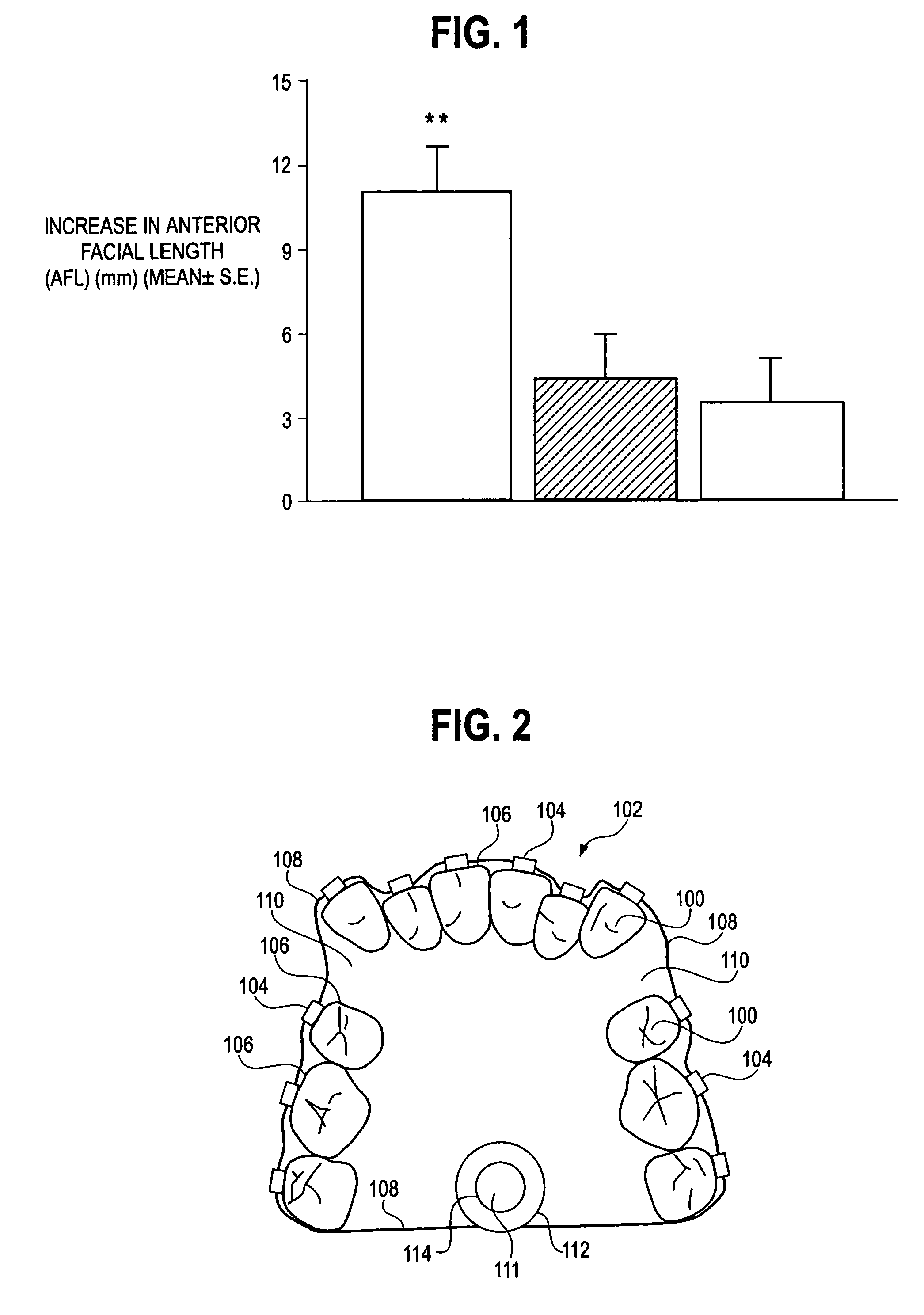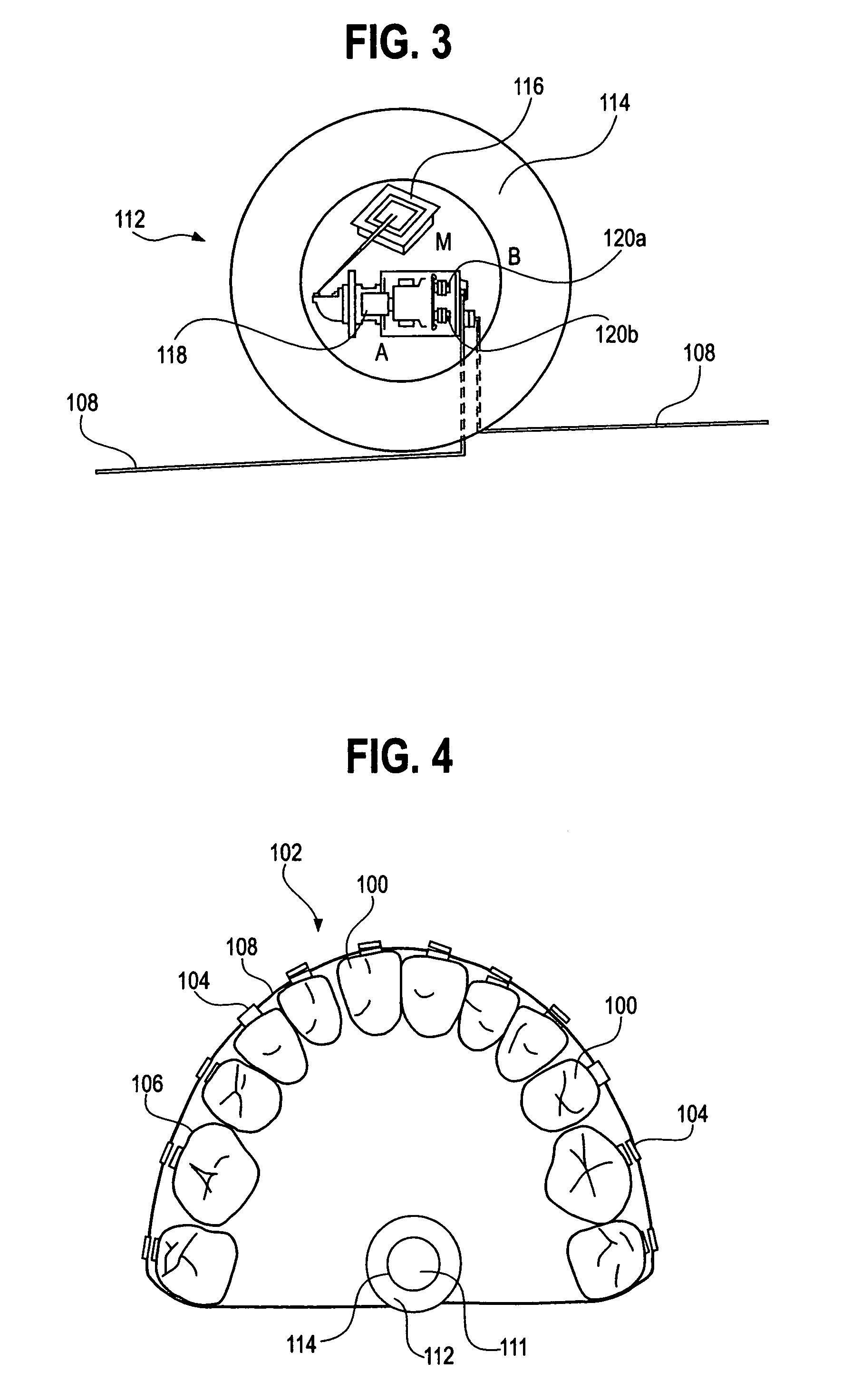Use of cyclic forces to expedite remodeling of craniofacial bones
a technology of cyclic forces and craniofacial bones, which is applied in the field of use of cyclic forces to expedite craniofacial bone remodeling, can solve the problems of lack of consideration of force frequency, no one has attempted to determine, and more rapid tooth movement, so as to achieve the effect of faster craniofacial bone restructuring
- Summary
- Abstract
- Description
- Claims
- Application Information
AI Technical Summary
Benefits of technology
Problems solved by technology
Method used
Image
Examples
Embodiment Construction
[0026]Static forces have been used for more than a century to modulate osteogenesis of cranial sutures in not only laboratory research but also clinical practice. Cyclic forces are shown here to stimulate more effective sutural osteogenesis than static forces. Similarly, static forces have been orthodontically used for a much longer period of history the realignment of patients' teeth for treating malocclusion. Cyclic forces are similarly used here to achieve a desired orthodontic effect in a reduced period of time.
[0027]In accordance with the present invention, cyclic forces are used to expedite the remodeling of teeth and craniofacial bones in living mammal. Thus, this invention concerns the remodeling of a mammal's face by osteogenesis of the craniofacial bones or by realigning one or more of the mammal's teeth. Exemplary mammals are humans, apes, monkeys, rabbits, mice, rats and other laboratory animals as well as companion animals such as cats and dogs, and livestock such as pi...
PUM
 Login to View More
Login to View More Abstract
Description
Claims
Application Information
 Login to View More
Login to View More - R&D
- Intellectual Property
- Life Sciences
- Materials
- Tech Scout
- Unparalleled Data Quality
- Higher Quality Content
- 60% Fewer Hallucinations
Browse by: Latest US Patents, China's latest patents, Technical Efficacy Thesaurus, Application Domain, Technology Topic, Popular Technical Reports.
© 2025 PatSnap. All rights reserved.Legal|Privacy policy|Modern Slavery Act Transparency Statement|Sitemap|About US| Contact US: help@patsnap.com


